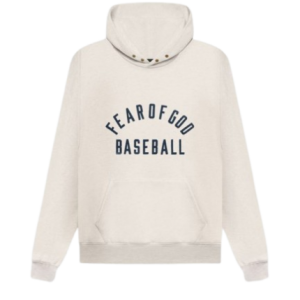In a fashion landscape saturated with trends and fleeting styles, Denim Tears stands out as more than just a streetwear brand. It is a cultural statement. Founded by Tremaine Emory, the brand uniquely combines elements of Black history, political resistance, and artistic expression into wearable Denim Tears garments that provoke thought as much as they exude style. Denim Tears is not just about looking good—it's about wearing a message, and every piece tells a story rooted in identity, struggle, and pride.
The Vision Behind Denim Tears
At the heart of Denim Tears is Tremaine Emory, a creative force who has worn many hats in the fashion and art world. Emory is not just a designer—he’s a storyteller. He envisions his brand as a vehicle to educate people on the Black experience, especially in America. Denim Tears was born out of his desire to connect streetwear with a deeper social message. Rather than rely on logos and trends, he infused his collections with symbols of African American history, using clothing as a platform to initiate conversations.
His work doesn’t shy away from uncomfortable truths. In fact, it confronts them head-on. Through bold visual imagery and historical references, Emory transforms denim jackets, sweatshirts, and t-shirts into tools of remembrance and activism. His intention is to encourage consumers to engage with the past, understand systemic injustices, and express solidarity through fashion.
A History Sewn into Every Stitch
One of the most defining characteristics of Denim Tears is its unflinching use of historical context. The brand’s most iconic piece—the cotton wreath motif—is a direct reference to slavery in the United States. Placed on denim jeans and jackets, the cotton flower becomes a symbol of pain, endurance, and resilience. It’s a stark reminder of the history of forced labor and exploitation, particularly of African Americans who toiled in cotton fields for generations.
By placing this imagery on denim—a fabric historically worn by workers—Emory highlights the intersection of labor, identity, and resistance. Denim Tears essentially reclaims denim as a symbol of survival and pride, turning a once utilitarian garment into a canvas for cultural expression.
Emory’s collections are deeply researched. He delves into the archives of African American history, pulling references from literature, music, and the civil rights movement. His collaboration with the Estate of Emmett Till and the use of images from key moments in Black history are examples of how seriously he takes his role as both designer and historian.
Where Fashion Meets Activism
Streetwear has long had a rebellious streak, often serving as the voice of youth counterculture. But Denim Tears elevates that idea by embedding clear socio-political messaging in its work. It doesn’t aim for shock value; instead, it demands reflection. The garments don’t just reflect the times—they respond to them.
When Emory collaborated with Converse, he didn’t simply redesign a shoe. He told a story. The Chuck 70 sneaker he created was wrapped in the cotton wreath design, once again emphasizing the burden of historical memory. Similarly, his work with Levi’s drew attention not just for its aesthetic but for its deliberate storytelling about slavery and Black identity in America.
Each of these projects blurs the line between fashion and activism. Denim Tears asks the wearer: “Are you willing to wear history on your body?” And for those who do, it’s not just a fashion choice—it’s a statement of awareness and empathy.
A Dialogue Between Art and Apparel
In many ways, Denim Tears is as much an art project as it is a clothing brand. Tremaine Emory’s background in creative direction and his close ties to visual artists inform the brand’s aesthetic. The collections are curated with the precision of a gallery exhibit. Every item is part of a larger narrative—one that explores themes like ancestry, displacement, spirituality, and empowerment.
Emory’s creative process often involves collaborations with visual artists, photographers, and musicians. These collaborations extend the reach of Denim Tears beyond fashion and into a multidisciplinary space where art and clothing intersect. Whether through powerful campaign visuals or thoughtful installations, Denim Tears communicates in ways that go far beyond traditional marketing.
By embracing this cross-pollination of media, Emory makes Denim Tears accessible to diverse audiences. The clothes become a gateway for deeper conversations about culture, memory, and justice. This artistic approach is what elevates the brand into something more than just commercial enterprise—it becomes a living, breathing cultural artifact.
Global Impact and Recognition
Since its inception, Denim Tears has received international acclaim, not only from streetwear enthusiasts but also from the art and fashion elite. Major publications have recognized the brand’s cultural significance, and Emory himself has become a respected voice in both creative and activist circles.
What sets Denim Tears apart on the global stage is its authenticity. In an industry often accused of appropriating culture for profit, Denim Tears stands as an example of fashion rooted in lived experience. Its unapologetic Blackness, historical honesty, and refusal to conform to trend cycles make it Denim Tears Hoodie a rare and respected presence in contemporary fashion.
Moreover, Emory’s role as creative director at Supreme has amplified his influence, allowing him to inject his social and artistic vision into one of streetwear’s most iconic brands. Still, Denim Tears remains his personal canvas—a space where his ideas about justice, identity, and creativity can unfold without compromise.
A Movement in Fabric Form
Denim Tears is more than clothing—it is a call to consciousness. Tremaine Emory uses fashion not just to make people look good, but to make them think. He urges the world to confront history, embrace complexity, and move toward a more honest, inclusive future. The brand is not for everyone, and that’s part of its strength. It speaks directly to those willing to explore the uncomfortable, to learn, and to represent something larger than themselves.
By merging activism, art, and streetwear, Denim Tears redefines what it means to wear your values. It’s a testament to the power of fashion as a storytelling medium and a reminder that even the clothes we wear can carry the weight of history, the fire of resistance, and the beauty of resilience.








